A hero’s monument
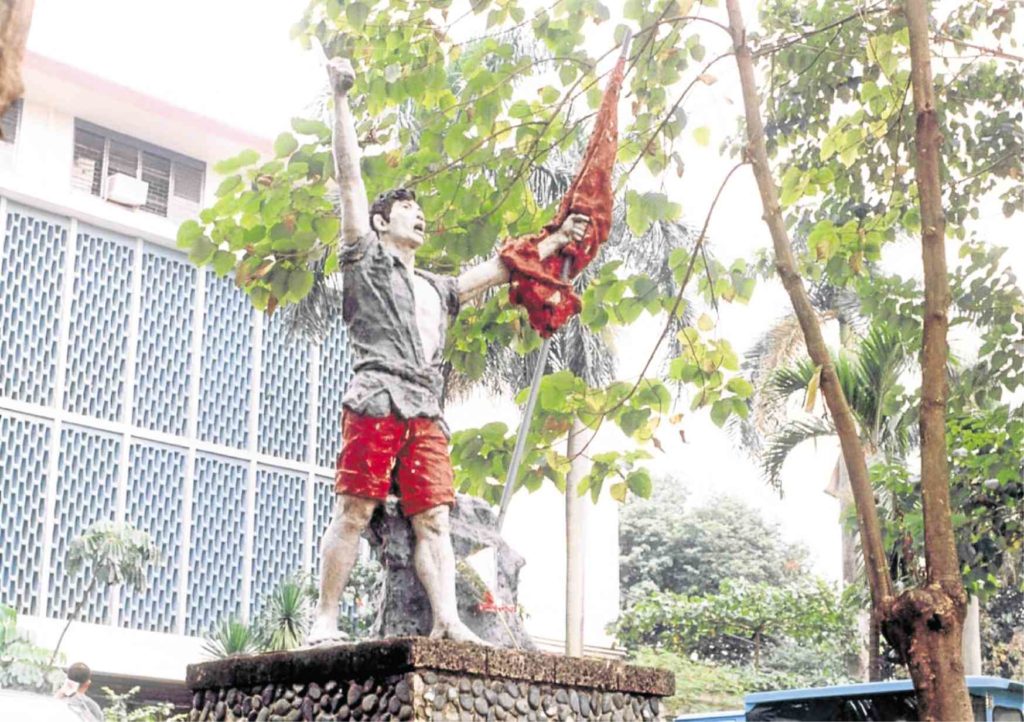
Bonifacio monument in UP Diliman (Photo from up.edu.ph)
The monuments of Andres Bonifacio, leader of the Katipunan secret society that waged a revolution against Spain, have been hounded by controversies in recent years as urban planners seek to alter Metro Manila’s public spaces.
One of them was the 84-year-old Bonifacio Monument located at the northern end of the Light Rail Transit (LRT) Line 1 in Caloocan City. It was inaugurated on Nov. 30, 1933, Bonifacio’s 70th birth anniversary.
Caloocan, which used to be a barrio in Tondo, Manila, was the center of the Philippine revolution that broke out in August 1896. Public Act No. 2760 of 1918 and Public Act No. 3602 of 1929 then authorized the erection of the Bonifacio Monument and characterized the structure as a “national monument to honor the hero’s historic contribution to the birth of the nation.”
This bronze and granite masterpiece features a 45-foot obelisk topped by a figure of the “winged victory” by sculptor Guillermo Tolentino. The figure represents the triumph of the Filipinos over Spanish forces.
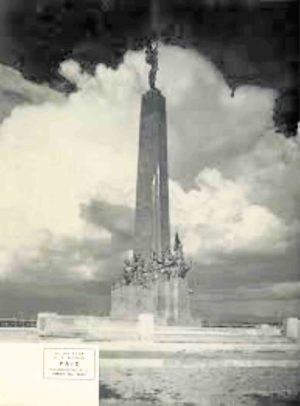
Bonifacio monument in Caloocan, circa 1933 (from Offical Gazette)
All the figures, including those of Bonifacio, Emilio Jacinto, Gomburza and other Katipuneros, are on an octagonal base representing the first eight provinces placed under martial law at the outbreak of the revolution. The base rises three steps to symbolize three centuries of Spanish colonization.
Relocation plans
But access to the monument is difficult because it is located on a busy rotunda formed by the intersection of Edsa, Rizal Avenue from Manila, MacArthur Highway from Valenzuela City and Samson Road from Caloocan proper.
Caloocan City officials have tried to come up with plans relating to the monument. In 2002, then Mayor Rey Malonzo considered relocating it to give way to the proposed linking of Metro Rail Transit (MRT) and LRT in the city.
The National Historical Commission of the Philippines (NHCP), formerly National Historical Institute (NHI), and other conservationist groups opposed the plan, calling it “a narrow-minded proposal,” because of the monument’s historical value in its present location.
Former NHI chair Ambeth Ocampo issued a resolution declaring the structure as a national monument and that any plans to touch the monument would be unlawful.
Centennial monument
The other shrine of the revolutionary leader in West Rembo, Makati City had a different story after the Bonifacio centennial monument was brought down to give way to a road project.
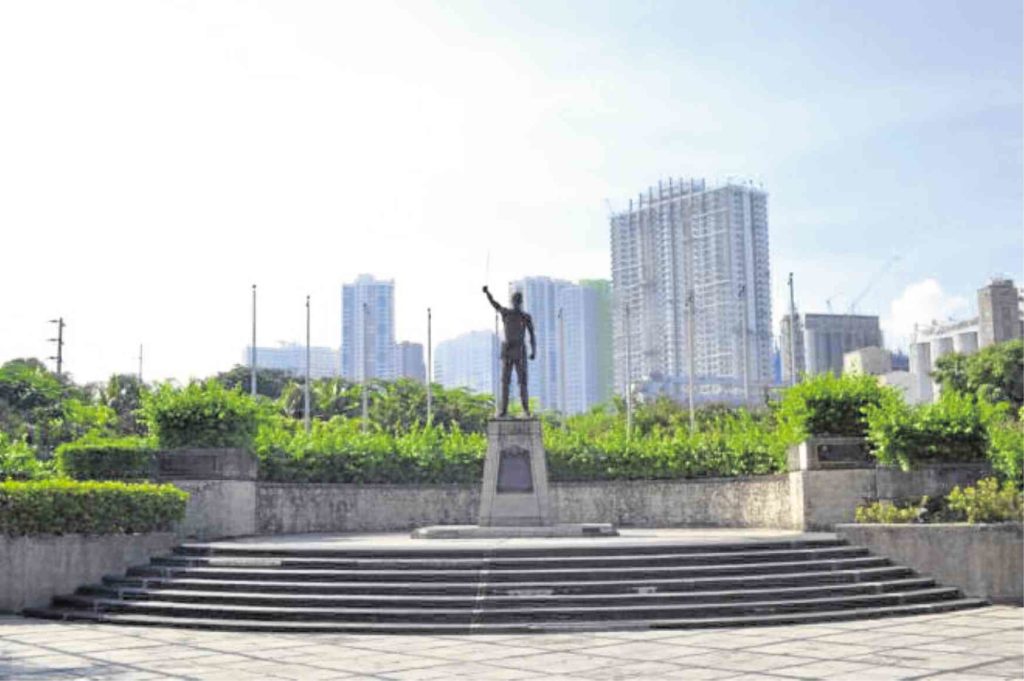
Bonifacio centennial monument in West Rembo, Makati City (Photo from PDI)
The monument was inaugurated in 1997 as a state memorial for the 100th death anniversary of the father of the Philippine Revolution. It is located inside Makati Park and Garden, before the original Gate 1 of Fort Bonifacio, the Philippine Army camp and headquarters.
But the centennial monument has been toppled by the Department of Public Works and Highways (DPWH) to make way for the road project linking Bonifacio Global City in Taguig and Ortigas Center in Pasig City.
Inquirer had reported that the monument was tied to the flag pole, while the historical marker had been piled with the debris in a gazebo of the park.
NHCP earlier said in a report that the DPWH did not reach out to the cultural agency to inform or coordinate with them about the demolition.
On Nov. 2, NHCP deputy director Carminda Arevalo wrote to Makati Mayor Abby Binay requesting coordination on the DPWH project, and advising the mayor “not to undertake any work or changes in the area until we approve the development plan.” But the monument had been taken down by then.
The monument, which had a commemorative marker from the NHI, was created by sculptor Juan Sajid Imao, son of National Artist for the Visual Arts Abdulmari Asia Imao.
From Balintawak to UP Diliman
Another monument named “El Grito del Revolucion” was removed from its original place in Balintawak. It was later transferred to the University of the Philippines (UP) Diliman.
The figure in the shrine was a generic Katipunero who was often identified as Bonifacio.
Created by sculptor Ramon Lazaro Martinez, the privately funded monument was unveiled on Sept. 3, 1911. It later became famous as a commemoration of the Cry of Balintawak.
But it was unceremoniously dumped on the roadside in the late ’60s when the intersection of Balintawak where the monument stood was renovated to give way to an interchange.
Student groups pushed to keep the discarded document and was later installed in front of Vinzons Hall in UP Diliman on Nov. 29, 1968. It was called “Homenaje del Pueblo Filipino a Los Heroes de 96” or “Ala-ala ng Bayang Filipino sa mga Bayani ng 96.”
Other Bonifacio monuments that are still in their original place include the Liwasang Bonifacio in front of the National Post Office in Manila (erected in 1963); Bonifacio monument in front of the old Tutuban Railroad Station, now a shopping mall, (erected in 1971) and the Bonifacio monuments in the city halls of Quezon City and Manila.
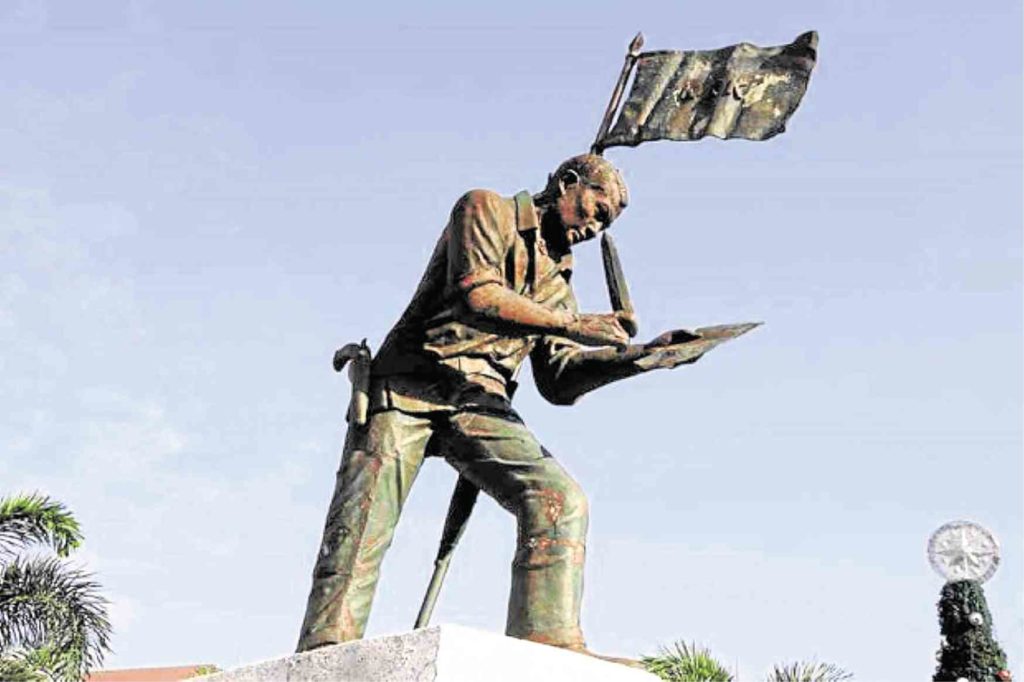
Bonifacio monument in front of the former Tutuban station (PDI photo)
Kaanak 1896, the group of relatives and descendants of Katipuneros, once reminded city planners that they “do not have a business in tinkering with historical and cultural places.”
(Sources: Inquirer Archives, Historical Markers in Metropolitan Manila, officialgazette.gov.ph, up.edu.ph, malacanang.gov.ph)
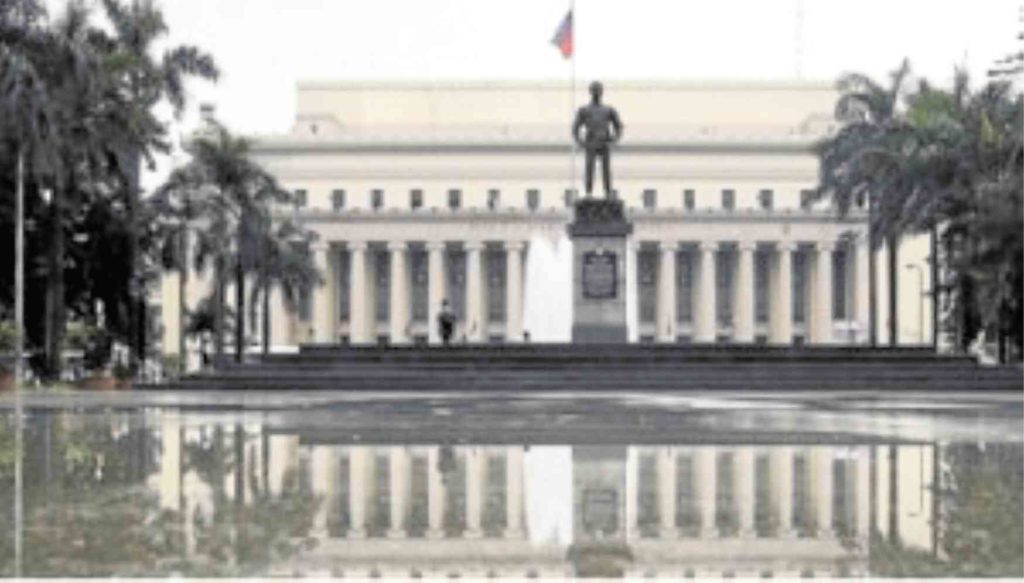
Liwasang Bonifacio Shrine (PDI photo)
